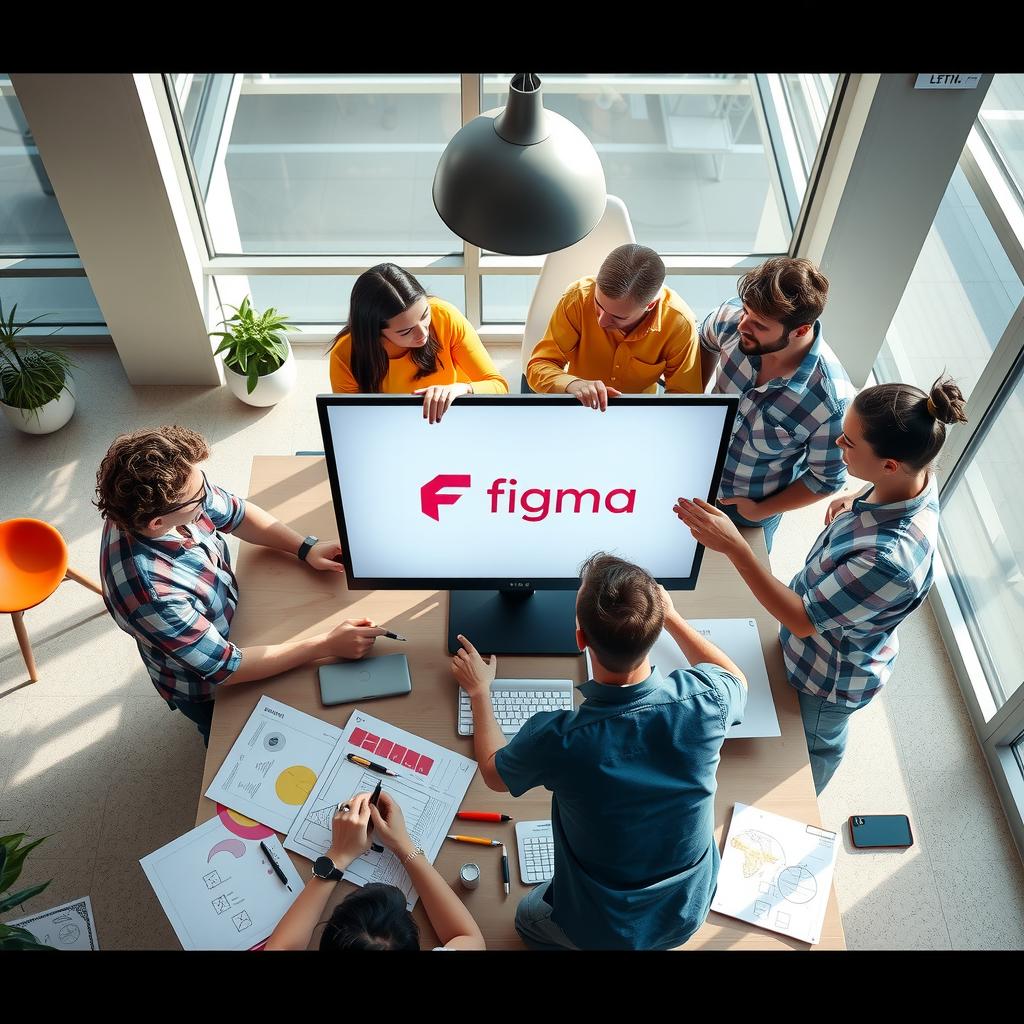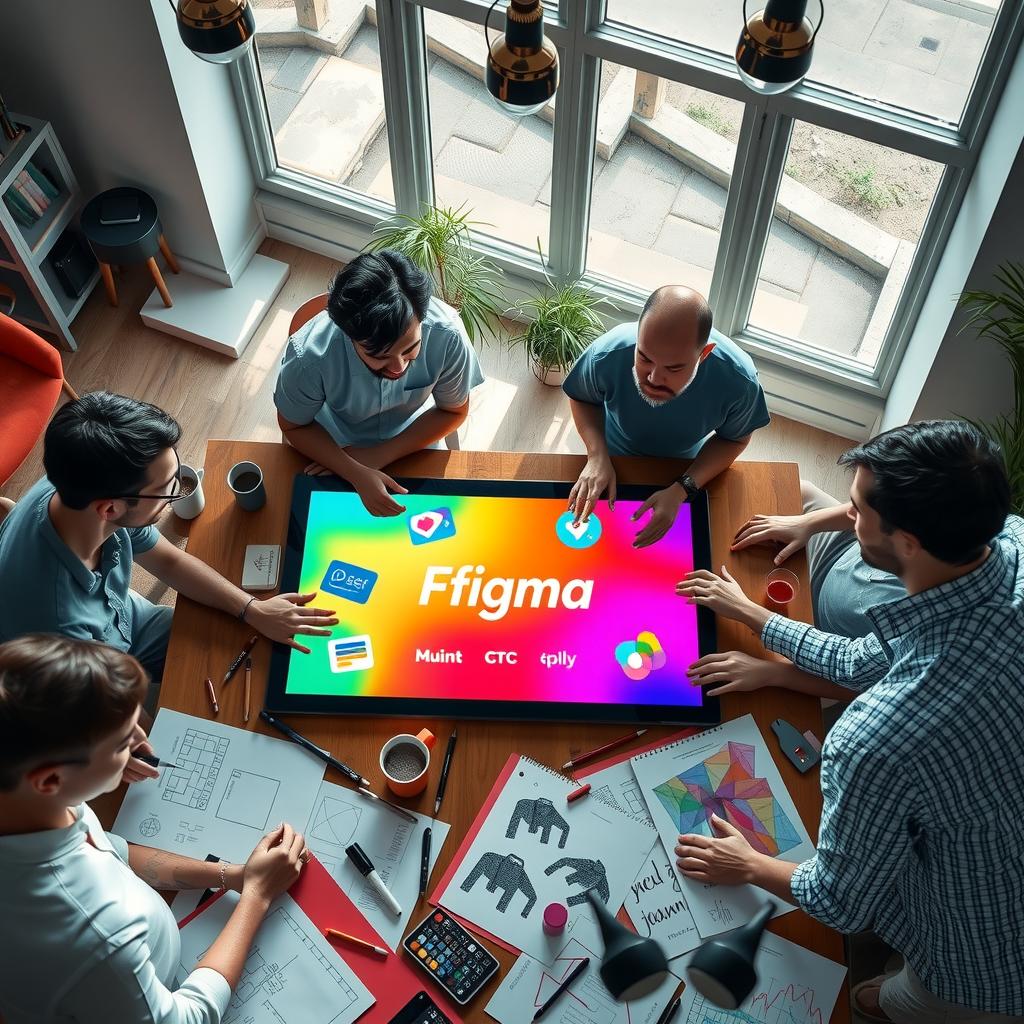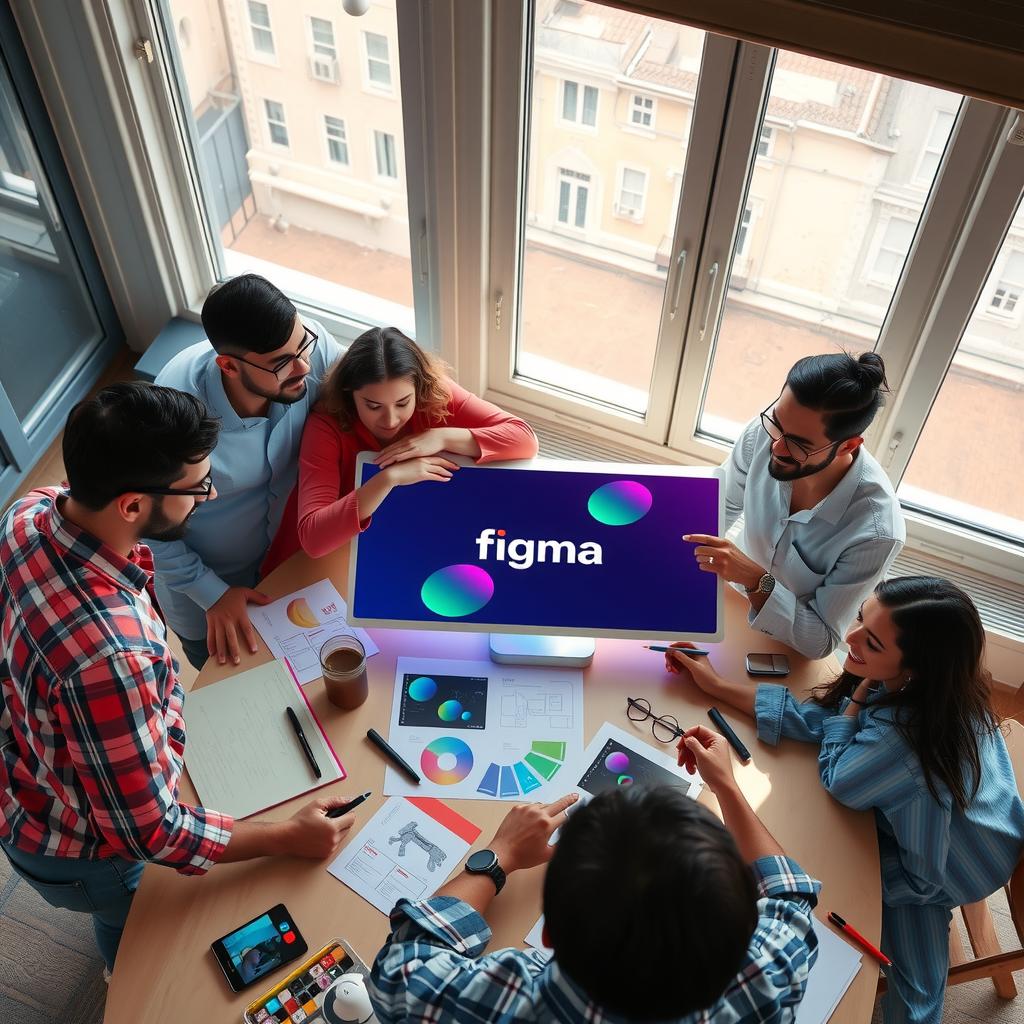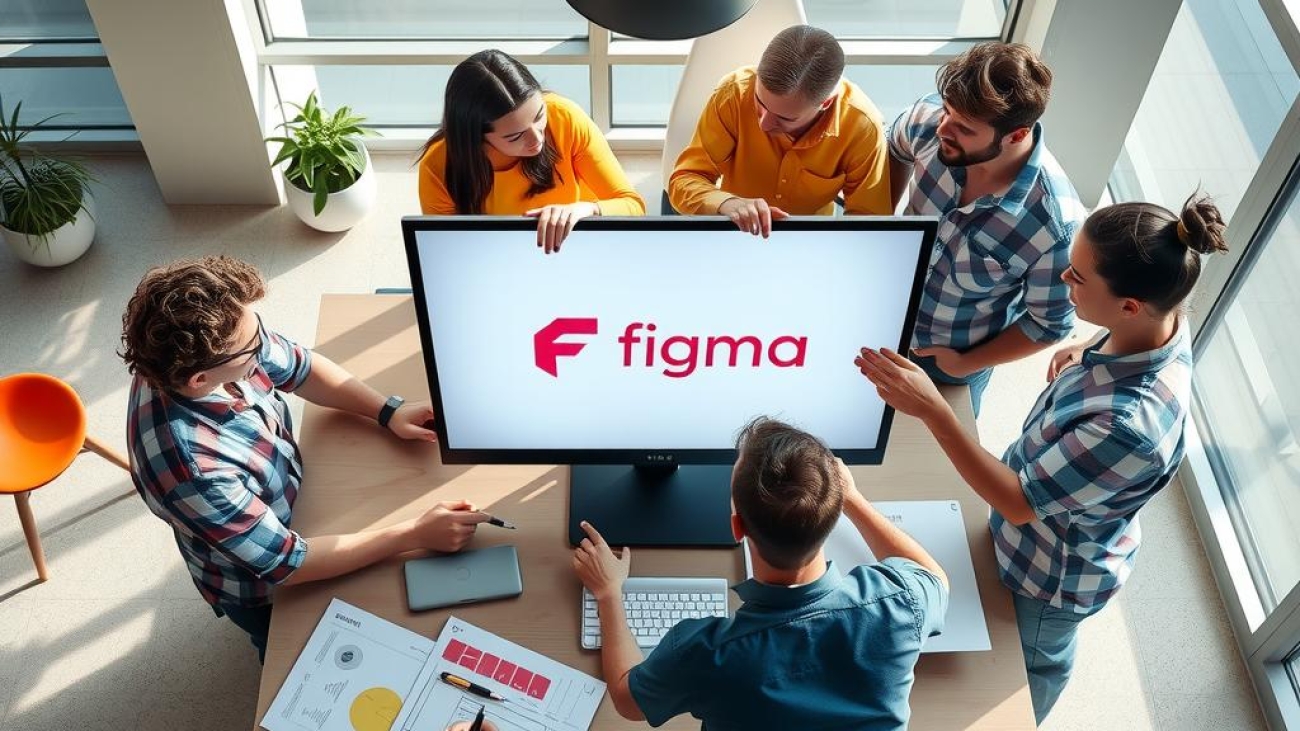In an era where remote work has become the norm, how can distributed design teams maintain their creative edge and foster effective collaboration? As organizations increasingly embrace flexible working arrangements, the challenge of unifying diverse team members across different locations becomes paramount. The key to overcoming this hurdle lies in leveraging powerful tools that facilitate seamless teamwork strategies. Enter Figma—an innovative platform designed specifically for collaborative design efforts. This article delves into essential collaboration tips for distributed design teams, demonstrating how Figma can transform their workflow.
One of the core values of utilizing Figma is its ability to enable real-time collaboration among designers, regardless of their geographical location. With features that promote effective communication and streamline project management, Figma empowers design teams to share ideas instantly and receive feedback promptly. By harnessing such capabilities, teams not only enhance creativity but also ensure a more cohesive approach to tackling projects from inception to completion.
As remote work continues to redefine traditional office dynamics, adopting tailored practices is crucial for success within distributed design settings. This blog post will explore various strategies aimed at optimizing design workflows, utilizing Figma’s robust tools as a foundation for enhanced interaction among team members. Readers will discover practical insights on maintaining momentum in collaborative projects while ensuring that everyone feels included and valued in the decision-making process.
Through thoughtful implementation of these tips within the context of using Figma, distributed design teams can cultivate an environment conducive to innovation and productivity. By prioritizing open lines of communication and encouraging participation from all corners of the globe, organizations stand poised not just to survive but thrive in today’s competitive landscape.
Join us as we delve deeper into actionable tactics that leverage Figma’s strengths—ultimately guiding distributed design professionals toward achieving harmonious teamwork amidst distance challenges.

Key Points:
-
Effective Communication Practices: Seamless interaction fosters collaboration
In a remote work environment, effective communication stands as the cornerstone for any successful distributed design team. Utilizing tools like Figma, which offers real-time feedback capabilities, ensures that all team members remain aligned throughout various project phases. This instant sharing of insights not only streamlines the overall design workflow but also nurtures an inclusive atmosphere where every voice can be heard. By integrating these essential collaboration tips, teams can significantly enhance their collective creativity. -
Establishing Clear Protocols: Mitigating misunderstandings through structured guidelines
For remote design teams navigating different time zones and personal commitments, establishing clear protocols around meeting schedules and deliverable expectations is paramount. Implementing systematic approaches helps mitigate potential miscommunications stemming from asynchronous workflows. With features such as Figma’s commenting system, designers can leave specific notes directly on projects, making it easier to track changes while promoting accountability among individual contributions. These strategies contribute greatly to maintaining trust in collaborative efforts. -
Innovative Teamwork Strategies: Adapting to evolving challenges collaboratively
As distributed design teams face unique challenges in a virtual setting, embracing innovative teamwork strategies becomes crucial for success. Leveraging Figma not only provides advanced functionalities that facilitate smooth collaboration but also encourages continuous learning within the group. By adopting thoughtful practices tailored to their specific needs, remote teams are better equipped to navigate obstacles effectively while achieving shared goals creatively together—ultimately enhancing their overall project management effectiveness and fostering dynamic teamwork strategies.

The Importance of Clear Communication in Remote Design
Uniting Teams Through Effective Collaboration
In the fast-evolving landscape of remote work, clear communication has become a cornerstone for successful collaboration among distributed design teams. As professionals navigate the complexities of working from various locations, establishing effective communication practices is essential to ensure that all team members are aligned with project goals and timelines. Tools like Figma play a pivotal role in this context by providing real-time collaborative features that enhance teamwork strategies. With capabilities such as live editing and commenting, Figma allows designers to share their ideas instantly, enabling them to respond swiftly to feedback and iterate on designs without the delays often associated with traditional workflows. This level of immediate interaction fosters an environment where creativity thrives, as team members can build upon each other’s contributions right away.
Bridging Gaps with Real-Time Collaboration
Enhancing Team Dynamics Across Distances
Effective communication becomes even more critical when it comes to managing design workflows in a remote setting. The challenge lies not only in conveying ideas clearly but also in ensuring that every member feels connected despite physical distances. In this regard, Figma’s cloud-based platform serves as an invaluable resource for fostering engagement among dispersed teams. By allowing multiple users to work simultaneously on a single document or prototype, it eliminates barriers typically encountered during asynchronous communication methods such as emails or static file exchanges. This dynamic approach empowers teams to collaborate more effectively—sharing insights and making decisions collectively—which ultimately leads to improved project outcomes while reinforcing camaraderie within the group.
Strategies for Effective Remote Communication
Cultivating Clarity and Cohesion Among Designers
To maximize the benefits offered by tools like Figma, design teams must adopt specific strategies aimed at enhancing effective communication throughout their projects. Establishing regular check-ins via video calls can help maintain visibility into ongoing tasks while creating opportunities for open dialogue about challenges faced during development phases. Additionally, utilizing structured templates within Figma’s interface streamlines feedback processes; commentators can leave notes directly on designs which reduces ambiguity around requested changes or adjustments needed before moving forward. Furthermore, encouraging team members to embrace transparency regarding their workload fosters trust—a crucial element when collaborating remotely—ensuring everyone’s voice is heard equally without overshadowing quieter contributors.
Navigating Challenges through Collaborative Tools
Overcoming Obstacles with Innovative Solutions
Despite its many advantages, remote collaboration also presents unique challenges related primarily to differing time zones and varying levels of technology proficiency among team members working together across continents . However , employing tools like Figma, which boast user-friendly interfaces coupled with extensive support resources helps mitigate these issues significantly . For instance , creating comprehensive onboarding materials tailored specifically around using Figma’s_ functionalities equips new users quickly easing them into active participation . Moreover , leveraging features designed explicitly for project management enables seamless tracking progress against deadlines ensuring no one falls behind irrespective geographical constraints they might face along way . Thus transforming potential obstacles into stepping stones towards achieving cohesive creative outputs reflective shared vision underlying collective effort put forth by dedicated individuals committed realizing exceptional results collectively despite distance separating them physically .

Establishing Protocols for Effective Collaboration
Setting Clear Expectations in Asynchronous Work Environments
In today’s globalized work landscape, teams often span multiple time zones, making it essential to establish protocols that minimize misunderstandings. Effective communication becomes paramount when team members are working asynchronously, as delays in response can lead to confusion regarding deadlines and deliverables. One of the foundational strategies for overcoming these challenges is by setting clear expectations around meetings and project timelines. For instance, utilizing tools like Figma not only aids in collaborative design but also helps synchronize efforts by providing a shared space where updates can be tracked visually regardless of the time zone differences. By explicitly outlining meeting times converted into each participant’s local time and specifying deadlines with sufficient lead time—considering potential overlaps or gaps in availability—teams can foster a productive environment that mitigates miscommunications.
The Importance of Time Zone Awareness
Understanding how to navigate different time zones is crucial for remote work success. Without this awareness, it is easy for team members to overlook critical project milestones or misinterpret feedback due to timing discrepancies. To combat this issue effectively, employing tools such as Figma allows design teams to collaborate on projects while leaving comments that others can review at their convenience rather than relying solely on synchronous discussions. Implementing a centralized calendar that highlights all relevant deadlines adjusted according to each member’s local time fosters accountability among distributed teams and enhances overall workflow efficiency. Moreover, establishing regular check-ins scheduled at mutually agreeable times further strengthens teamwork strategies by ensuring everyone remains aligned on objectives despite geographic distances.
Enhancing Teamwork Through Structured Communication
Structured communication plays an integral role in managing projects across diverse locations effectively. When teams adopt consistent methods for sharing updates—such as using designated channels within platforms like Figma—they enhance transparency throughout the design process while simultaneously streamlining project management efforts. Teams should consider developing comprehensive guidelines detailing how feedback should be provided and what formats will be utilized during reviews; this ensures clarity around expectations from start to finish within their design workflow processes. Furthermore, incorporating asynchronous video messaging tools alongside traditional text-based communication allows team members who might not share overlapping hours an opportunity to convey thoughts more expressively without losing context over written correspondence alone—a vital aspect of maintaining effective dialogue amid varying schedules.
By implementing these protocols centered around collaboration tips tailored specifically for distributed environments—including awareness of geographical nuances and structured communicative practices—design teams can achieve remarkable synergy even when miles apart.
Fostering a Culture of Inclusivity in Remote Design Teams
Harnessing the Power of Figma for Enhanced Team Dynamics
In today’s increasingly distributed work environment, fostering a culture of inclusivity within remote design teams has never been more crucial. The innovative features offered by Figma play a vital role in promoting accountability and transparency, which are essential components for building trust among team members. By utilizing real-time collaboration tools available in Figma, teams can engage in effective communication that transcends geographical barriers. This platform allows designers to contribute ideas simultaneously, ensuring that everyone feels their voice is heard and valued. Such collaborative efforts not only enhance individual creativity but also strengthen the overall project management process.
When remote design teams leverage Figma’s capabilities, they naturally foster an environment where distributed design becomes second nature. The visual aspect of teamwork strategies derived from using Figma helps clarify complex concepts and encourages open dialogue about design choices. For instance, when multiple team members annotate designs or provide feedback directly on a shared canvas, it cultivates a sense of belonging as each contributor actively participates in shaping the outcome together. This dynamic interaction promotes shared ownership over projects and reinforces collective responsibility among team members.
Moreover, effective communication facilitated by Figma’s features enhances not just teamwork but also individual accountability within the group context. Clear version history tracking ensures that every contribution is documented; thus allowing team members to follow discussions easily without losing sight of prior decisions made during the design workflow stages. As such transparency grows within remote settings—where physical presence cannot be guaranteed—the likelihood for misunderstandings decreases dramatically.
Furthermore, incorporating structured processes while using Figma’s interface can significantly improve how tasks are allocated and monitored across diverse groups scattered around different time zones. Features like comment threads enable asynchronous conversations on specific elements or entire designs while providing opportunities for thoughtful reflections before responding—this nurtures an inclusive atmosphere where all opinions are welcomed regardless of when they participate.
Ultimately, embracing tools such as Figma enables organizations to redefine their approach toward inclusivity amid dispersed working conditions effectively; consequently leading to higher morale amongst participants who feel seen and appreciated throughout their contributions towards common goals alongside colleagues globally.
Frequently Asked Questions:
Q: How can remote design teams improve their communication?
A: Effective communication is vital for remote design teams. Utilizing tools like Figma facilitates instant feedback and discussions, allowing team members to share insights seamlessly. By adopting structured practices such as regular check-ins and utilizing Figma‘s commenting features, teams can ensure everyone stays aligned throughout the project phases.
Q: What strategies can help maintain a smooth design workflow in distributed teams?
A: Maintaining a smooth design workflow involves establishing clear protocols around deliverable expectations and meeting schedules. Teams should leverage Figma to create transparency by enabling comments directly on designs, which helps track changes over time and fosters accountability among team members.
Q: How does using Figma contribute to effective teamwork in remote environments?
A: Using Figma enhances collaboration among distributed design teams by providing real-time editing capabilities and an inclusive platform for sharing ideas. This not only bridges geographical gaps but also promotes a culture of continuous learning—making it easier for designers to adapt their teamwork strategies in response to evolving challenges associated with remote work.
